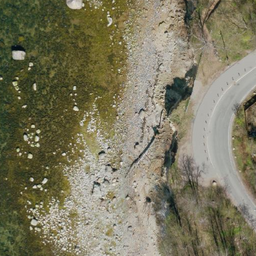Geotehniline uuring Kakumäe kalda kohta leidis, et
kaldal toimub ebaühtlane kulutamine
. Tormide ajal võib
panga varing
jõuda sõiduteeni kiiremini, kui varem arvati.
kaldal toimub ebaühtlane kulutamine
Tõlge fraasile: kaldal toimub ebaühtlane kulutamine
EN
uneven erosion is occurring on the slope
panga varing
Tõlge fraasile: panga varing
EN
cliff collapse
Varasemad uuringud näitasid, et kallas tõmbub aastas keskmiselt 60–70 cm tagasi. Uuring märgib, et tormide ajal võib meri panga tükkideks murda. Seda protsessi ei saa täpselt ennustada.
Uuringu kohaselt on võimatu lihtsate meetoditega panga taganemist peatada. Alates 1990ndate algusest on kallas taganenud 18–21 meetrit. Uuring soovitab Kakumäe tee 50-meetrisel lõigul liiklus sulgeda ja teha tee kahesuunaliseks.
Lisaks soovitatakse sulgeda
kergliiklustee
, mis asub kõrval kaldal. Kergliiklustee võib variseda iga-aastaste temperatuurimuutuste tõttu.
kergliiklustee
Tõlge fraasile: kergliiklustee
EN
pedestrian and cycling path
Kakumäe teed kasutavad kolm
bussiliin
i: 21A, 21B ja 41B. Uuring ütleb, et bussid ei mõjuta kalda stabiilsust.
bussiliin
Tõlge fraasile: bussiliin
EN
bus route
Tallinn ei kavatse teelõiku praegu sulgeda. Abilinnapea ütleb, et uuringu põhjal tehti
riskihinnang
, ja otsustati, et tee sulgemine pole vajalik. Jälgitakse regulaarselt olukorda.
riskihinnang
Tõlge fraasile: riskihinnang
EN
risk assessment
Keskkonna- ja kommunaalamet projekteerib bussidele tagasipöörde platsi, mis võetakse kasutusele, kui uued hinnangud näitavad, et tee tuleb sulgeda.
Uuring soovitab kolme meetodit varingute vastu:
tugisein
,
lainemurdja
ja
kaitserajatis
. Tugisein oleks 30–40 meetri kõrgune ja maksaks 2,5–3,5 miljonit eurot.
tugisein
Tõlge fraasile: tugisein
EN
retaining wall
lainemurdja
Tõlge fraasile: lainemurdja
EN
wave breaker
kaitserajatis
Tõlge fraasile: kaitserajatis
EN
protective structure
Lisaks teele on ohus ka Kakumäe tee 249
kõrvalhoone
. Kui kallas jätkab praeguse kiirusega taganemist, võib hooneni jõuda 30 aasta pärast.
kõrvalhoone
Tõlge fraasile: kõrvalhoone
EN
outbuilding
The geotechnical study of the Kakumäe coast found that uneven erosion is occurring on the slope. During storms, a cliff collapse could reach the roadway faster than previously thought.
Previous studies showed that the slope retreats an average of 60–70 cm per year. The study notes that during storms, the sea can break the cliff into pieces. This process cannot be accurately predicted.
According to the study, it is impossible to stop the retreat of the slope with simple methods. Since the early 1990s, the slope has retreated 18–21 meters. The study recommends closing a 50-meter section of Kakumäe Road to traffic and making the road two-way.
In addition, it is recommended to close the pedestrian and cycling path located next to the slope. The path may collapse due to annual temperature changes.
Three bus lines use Kakumäe Road: 21A, 21B, and 41B. The study states that buses do not affect the stability of the slope.
Tallinn does not plan to close the section of the road at this time. The deputy mayor says that a risk assessment was made based on the study, and it was decided that closing the road is not necessary. The situation is being monitored regularly.
The Environment and Public Works Department is designing a bus turnaround area, which will be implemented if new assessments show that the road needs to be closed.
The study recommends three methods against landslides: a retaining wall, a wave breaker, and a protective structure. The retaining wall would be 30–40 meters high and cost 2.5–3.5 million euros.
In addition to the road, the building at 249 Kakumäe Road is also at risk. If the slope continues to retreat at the current rate, it could reach the building in 30 years.

